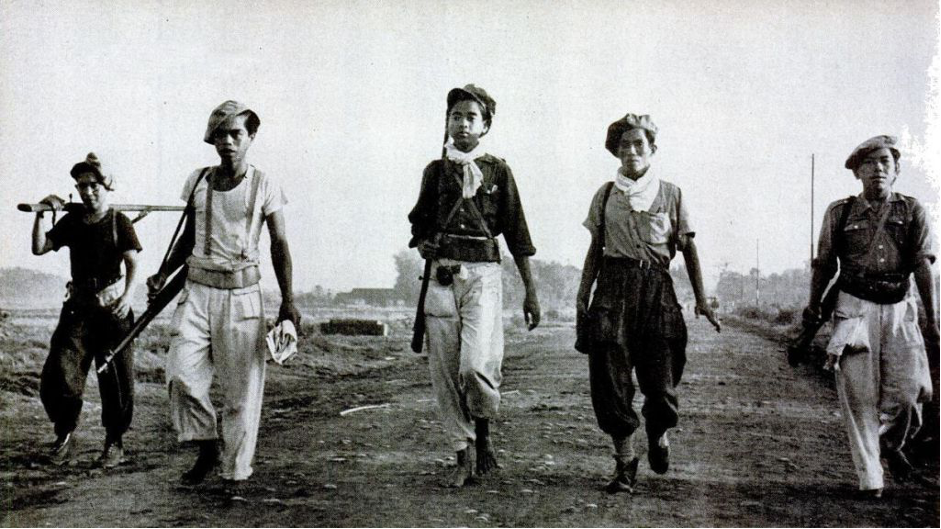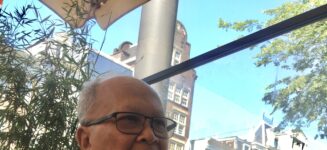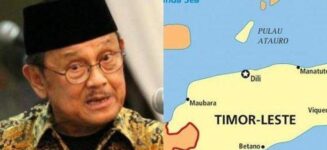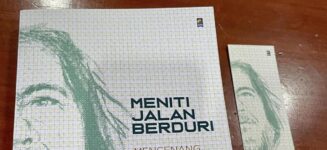The article has been published in The Jakarta Post 20 January 2022
https://www.thejakartapost.com/paper/2022/01/19/bersiap-ignoring-dutch-colonialism.html
An Indonesian historian has become a target of anger in the Netherlands. Controversy has led to an almost hysteria following the ban of the term bersiap (get ready) as the Dutch Royal Museum in Amsterdam will hold a special exhibition titled Revolusi, Indonesia’s Independence, the first of its kind, next month.
To introduce the exhibition, its guest curator, Bonnie Triyana, the editor-in-chief of Indonesian publication Historia, wrote an opinion piece suggesting that “the word bersiap should not be used for the period following the Japanese surrender because it carries a racist tone.”
The public emotional response has been enormous.
Bersiap is an Indonesian word but not an Indonesian concept. Many locals opted for terms like rampokan (robbery), serbuan (attack) and such to denote freedom fighters’ attacks during the revolutionary struggle of independence.
In the Dutch context, however, bersiap carries a deeply emotional substance, a great anger, as it refers to the violent attacks and the killings of thousands of Indisch of mixed Dutch-Indonesian origins and many Ambonese and others then seen as pro-colonial. Bersiap was a word the revolutionary youth used in response to the arrival of and humiliation by the Dutch force who came along with the British ally following the Japanese surrender in 1945.
Strange as it may be for most Indonesians, then or today, for the Dutch and the Indisch who became victims of mass violence, the concept touches their nerves and is deeply painful. It should be understood — hence, respected — that it has become a symbol of their suffering.
The public response, thus, came soon. An organization called Federation of Dutch-Indisch (FIN), founded by the first and second generation of the Indisch community, wrote a protest letter and has threatened to bring the Royal Museum to justice. Similar anger soon followed.
The museum quickly gave up and said it would not ban the word bersiap from the exhibition that will last from Feb. 11 until June. Bonnie had in fact sent a copy of his column to the Royal Museum days before it was published by NRC Handelsblad. There was no response from the museum. Indeed, there was no correction or special note from the museum when it held its first press conference on Jan. 11 explaining the complexity of the period.
Given the public’s furious responses, however, the museum director, Taco Dibbits, told the paper: “The term bersiap will not be banned (…) We use it in the exhibition and in the introduction of the book, the Royal Museum thus will not ban the word and we do not deny the violence and the suffering the term refers to, and will explain the term.”
Concerning Bonnie’s view, Dibbits said, “it’s his opinion”. Strangely, though, he denied the museum ever received Bonnie’s paper before it was published.
The paper, too, has changed its course. Bonnie’s article, first titled “Ban the word bersiap because it’s racist” (NRC website accessed Jan. 10), now has turned, somewhat euphemistically, if not apologetically, into “The simplifying term bersiap is not good for the period” (NRC paper Jan. 12).
So how are we to deal with the issue?
It’s clear the Dutch bersiap is a one-sided and narrow-minded concept. It was an ethnocentric concept as the Dutch — the victims and their families — exclusively use it for the violence generated by the Indonesian revolutionary youth against them and Indonesian-Chinese – ignoring other victims elsewhere, i.e. locals, who were also considered Dutch collaborators.
Indeed, there were similar violence explosions among Indonesians like those in the Central Java north coast towns of Brebes, Tegal and Pemalang (called peristiwa tiga daerah), in Surakarta (revolusi sosial), North Sumatra, Aceh (Cumbok War) and Bali (Margarana) – all perpetrated by the locals against local aristocrats and officials seen as pro-Dutch. Both the bersiap actions and these revolts were part and parcel of the revolution, as I suggested in my article in The Jakarta Post (Nov.15, 2017).
What is more, former foreign minister Roeslan Abdulgani told me in an interview in 1996 that bersiap was preceded by weeks of British bombing during the holy month of Ramadhan in 1945, which prompted then-president Sukarno and prime minister Sjahrir to call upon the people to stop the violence.
So why do the Dutch have a very selective memory? That was the first part of Bonnie’s argument, too. Second, Bonnie suggests its selectiveness carries a racist emotional undertone, which also happened at that time. For would it have happened, he concludes, if the Dutch, helped by the allies, did not join to return in order to recolonize Indonesia?
The form and nature of this racism may be debatable, but to suggest that bersiap was the mother of all violence while denying the people struggle for freedom – that is too biased for the very specific period of 1945-46 when the Dutch-Indisch were victimized.
That implies a degree of racism, indeed, because the bersiap violence was made possible because of persisting racism and injustice throughout the preceding decades that marked the history of Dutch colonialism.
After all, it may
ironically be useful to have the bersiap controversy. It is a good
opportunity for the Dutch-Indisch community, a long-time-forgotten section of
Dutch society, to learn the specific context of bersiap. It is the mission
of a museum to offer an open and balanced view of the history and very nature
of colonialism.
*** The author is a journalist, formerly with Radio Netherlands,
residing in Amsterdam.



